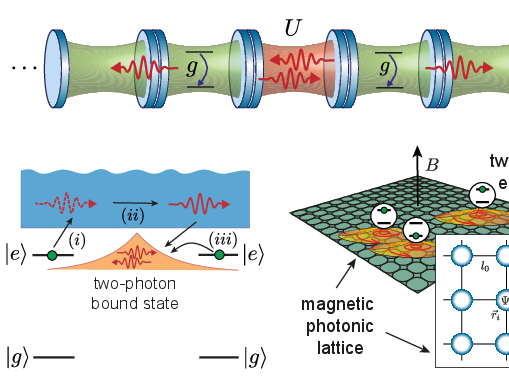Waveguide QED with Interacting Photons
The goal of this project is to explore the physics of light-matter interactions in systems of strongly interacting photons, as relevant, for example, for (artificial) superconducting atoms coupled to nonlinear microwave waveguides.
The spontaneous decay of an excited atom is a prototypical example, which shows how the coupling of microscopic quantum systems to a large environment leads to irreversible decay. Such open quantum systems are usually investigated under the premise that the environment can be well-described in terms of a set of independent harmonic oscillators, for example, electromagnetic modes. In this project we will go beyond this assumption and investigate system-reservoir interactions under conditions where excitations in the environment are strongly interacting. This research is primarily motivated by the goal to understand the physics of light-matter interactions in so-called waveguide QED systems, where due to a strong transverse confinement of the field, nonlinear effects at the few-photon level become significant and experimentally observable. The overall goal of this project is, first of all, to systematically investigate and characterize the most fundamental decay and scattering processes that arise in nonlinear photonic waveguides and to identify experimental configurations, where these effects dominate over the usual dissipation dynamics in linear environments. In a second step we will then investigate the application of these effects for new photo-detection and quantum information processing schemes, but also extend our analysis to topological photonic systems in 2D. Here, the interplay between strong light-matter interactions and photon nonlinearities leads to a particularly rich phenomenology and we will show that this can be exploited to implement new control and detection schemes for photonic quantum (Hall) simulators.

